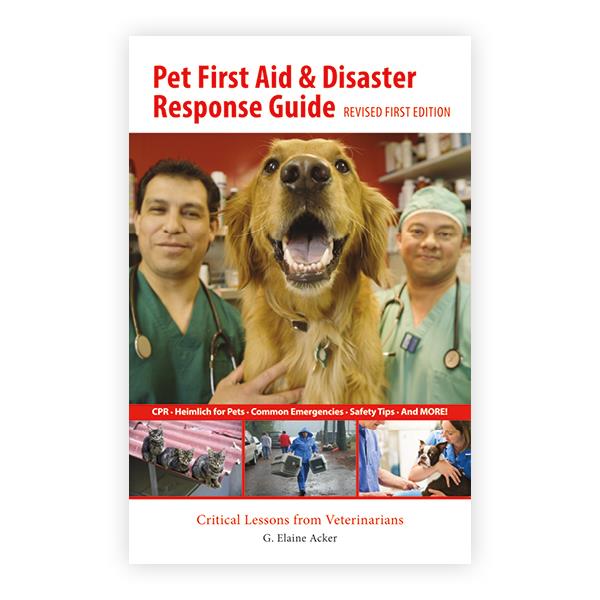
Pet First Aid – Essential Guide for Emergency Care
Estimated reading time: 10 minutes
Key Takeaways
- Pet first aid is critical for stabilizing your pet before professional help arrives.
- Nearly 60% of pet emergencies could be better managed with basic first aid knowledge (AVMA).
- Build a first aid kit for pets with essential supplies like gauze, antiseptic wipes, and a digital thermometer.
- Learn pet CPR and emergency techniques for choking, poisoning, and heatstroke.
- Always stay calm and assess the situation before acting.
Table of contents
- Pet First Aid – Essential Guide for Emergency Care
- Key Takeaways
- Understanding Pet First Aid Basics
- Building a Pet First Aid Kit
- Handling Minor Injuries at Home
- Emergency Situations: CPR & Life-Saving Techniques
- Additional Emergency Care Tips
- Conclusion: Be Prepared, Stay Calm, Act Fast
- Frequently Asked Questions
Every pet owner knows the heart-stopping moment when their furry friend gets hurt or suddenly falls ill. Whether it’s a choking hazard, a deep cut, or heatstroke, emergencies strike without warning. Pet first aid is the immediate care you provide to stabilize your pet before professional help arrives—and it can mean the difference between life and death.
According to the AVMA, nearly 60% of pet emergencies could be better managed with basic first aid knowledge. From overheating to poisoning, seizures, or accidental injuries, knowing what to do in those critical first minutes can save your pet’s life.
This pet first aid guide covers everything you need to know, including:
- How to build a first aid kit for pets
- Step-by-step instructions for treating minor injuries in dogs and cats
- A lifesaving pet CPR guide
- Emergency care tips for choking, poisoning, and heatstroke
Let’s dive in—because being prepared could save your pet’s life.
1. Understanding Pet First Aid Basics
Pet first aid is the immediate, temporary care given to an injured or suddenly ill pet until veterinary help is available. It’s not a substitute for professional treatment, but it can prevent further harm and buy crucial time.
Key Principles of Pet First Aid
- Stay calm: Pets sense stress, which can make them more anxious.
- Assess the situation: Check for breathing, bleeding, or signs of pain.
- Know when to call a vet: If symptoms are severe (e.g., unconsciousness, heavy bleeding), seek help immediately.
Initial Steps in an Emergency
- Keep emergency contacts handy (vet, poison control, nearest 24-hour clinic).
- Use a muzzle if needed—even friendly pets may bite when in pain.
- Restrain gently to avoid worsening injuries.
Pro Tip: Store your vet’s number in your phone and post it on the fridge. Seconds matter in emergencies.
2. Building a Pet First Aid Kit
A well-stocked first aid kit for pets is a must for every pet owner. Here’s what to include:
Essential Supplies
- Gauze rolls & sterile pads (for wounds)
- Adhesive tape & self-adhering bandages (won’t stick to fur)
- Blunt-tipped scissors & tweezers (for splinters or debris)
- Antiseptic wipes & saline solution (for cleaning wounds)
- Digital thermometer (normal temp: 101–102.5°F for dogs/cats)
- Hydrogen peroxide (3%) (for inducing vomiting—only if vet-approved)
- Emergency contact card (vet, poison control, pet’s medical history)
Special Items for Dogs vs. Cats
- Dogs: Tick-removal tools, paw balm, extra-large bandages.
- Cats: Smaller bandages, calming spray (stress worsens injuries).
Where to Keep Your Kit
- Home: In an easily accessible spot (kitchen or laundry room).
- Car: For road trips or emergencies away from home.
- Travel bag: If you hike or camp with your pet.
For more tips on pet-proofing your home to prevent accidents, check out our Ultimate Guide to Pet Safety.
3. Handling Minor Injuries at Home
Not every scrape needs a vet visit. Here’s how to treat minor injuries in dogs and cats safely.
For Dogs
- Cuts & scrapes: Rinse with saline, apply antiseptic, cover with gauze.
- Paw injuries: Remove debris, clean with antiseptic spray, bandage loosely.
- Burns: Cool with running water (10+ minutes), then cover with a sterile pad.
For Cats
- Scratches: Clean gently with saline, apply pet-safe ointment.
- Bruises: Restrict movement and monitor for swelling.
When to Call the Vet
- Bleeding doesn’t stop after 5–10 minutes of pressure.
- Wound is deep, near eyes/joints, or shows signs of infection (pus, redness).
If your pet ingests something toxic, refer to our guide on Signs of Pet Poisoning for immediate action steps.
Source: Embassy Lakes Animal Hospital
4. Emergency Situations: CPR & Life-Saving Techniques
If your pet stops breathing, pet CPR could save their life. Here’s what to do:
Step-by-Step Pet CPR Guide
- Check for breathing/pulse: Place your hand on the left side of the chest (behind the elbow).
- Clear the airway: Remove any blockages (use tweezers if needed).
- Chest compressions:
- Small pets: Use one hand (100–120 compressions per minute).
- Large dogs: Use both hands (compress 1/3 of the chest width).
- Rescue breaths: Close the mouth, breathe into the nose (1 breath every 5 compressions).
Important: Only perform CPR if there’s no pulse or breathing. Otherwise, rush to the vet.
For senior pets with underlying health conditions, review our Senior Pet Care Guide to recognize age-related risks.
Source: Animal Hospital of Nashua
5. Additional Emergency Care Tips
Choking
- If your pet is gagging, check the mouth for obstructions.
- Do NOT blindly sweep—you could push the object deeper.
- For deep blockages, perform the Heimlich maneuver (consult a vet first).
Poisoning
- Symptoms: Vomiting, drooling, seizures, lethargy.
- Act fast: Call ASPCA Poison Control (888-426-4435).
- Do NOT induce vomiting unless instructed (some toxins cause more damage coming up).
Heatstroke
- Signs: Heavy panting, bright red gums, collapse.
- Cool them down: Move to shade, apply cool (not icy) towels, offer water.
Seizures
- Do NOT restrain—clear the area and time the seizure.
- Afterward, keep them warm and calm.
Transporting an Injured Pet
- Use a stretcher (board/towel) for spinal injuries.
- For fractures, minimize movement and support the limb.
For seasonal hazards like overheating, explore our Seasonal Pet Care Tips for year-round safety.
